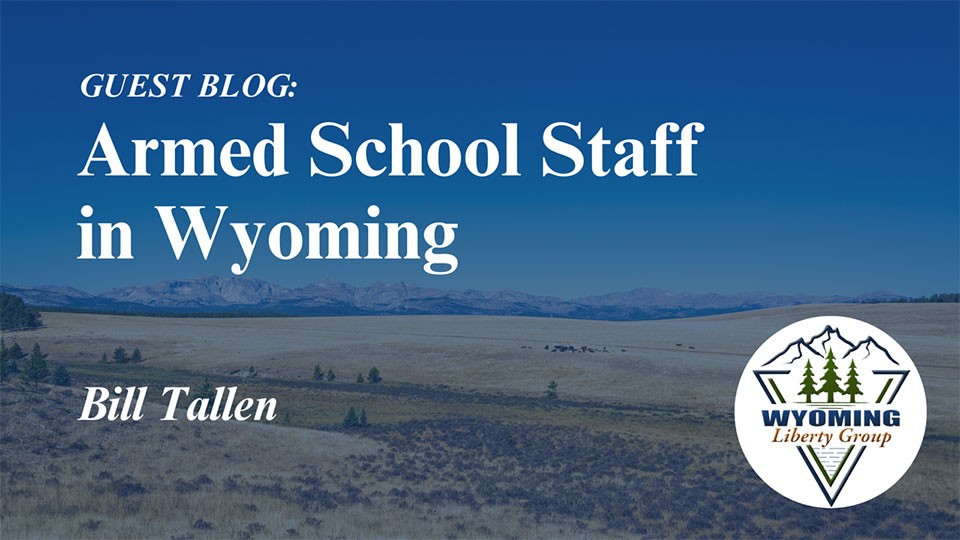by Bill Tallen
Shootings in American schools are infrequent, but still occur far too often for complacency. As important as they are, policy debates over our mental health system, and the extent to which widespread firearms ownership might enable or encourage these events offer no prospect of quick improvement in school security.
Given that far fewer than 1% of privately owned firearms in the United States are used in any form of criminal activity in any given year, there are enough in circulation to supply the needs of those with criminal intent for a very long time. This would remain true no matter how draconian any notional (and politically impossible) gun control regime might be. Our mental health system will not be overhauled in any near time frame, either.
While those policy debates rages, we have to take concrete actions to secure our schools against lethal violence. There are several overlapping but roughly sequential things that can be done, all of which contribute to some extent:
- Deterrence – nothing happens because potential attackers have no confidence of success.
- Detection – attackers are detected in their planning and preparation phase before they act.
- Prevention – mental health or law enforcement intervention follows detection and averts violence.
- Physical security and procedures might delay an attacker long enough for law enforcement responders to arrive on scene (although they are often defeated or bypassed).
- Defense – if all the above measures fail, then armed personnel on site stop the attacker in a matter of minutes, minimizing injury and loss of life.
Every time an innocent child, teacher, or administrator is killed at school, by definition the first four measures have all failed – so while they contribute, they are not enough.
The last line of defense is armed defenders on site. In the history of mass school shootings, there are very few exceptions to this rule: active shooters stop (a) when they choose; or (b) when they first encounter armed resistance, at which point they surrender, take their own life, or are themselves shot.
Our job is to ensure that they encounter armed resistance at the earliest possible moment. That can only be done by personnel on scene at the beginning of the incident, armed with effective firearms and well-trained in their use and in the necessary tactics and techniques to employ them safely and effectively.
Across the United States, responding police on average arrive on scene from three to fifteen minutes after the first 911 emergency call is received. Additional time passes as they receive the latest accurate intelligence, prepare, plan their response, enter the premises, find the offender, and finally stop him. Every minute after the attacker's first shot is fired, additional victims are wounded or killed. We call this the "critical response gap" between the first shot fired and effective intervention by law enforcement; a gap that must be filled by armed defenders on scene.
School Resource Officers (SROs) – commissioned police officers in the school – can sometimes provide this immediate armed resistance, but too often they have not. SROs are very expensive; many schools have none, and almost no schools have more than one. Active shooters are often not deterred by their presence, because they know enough of their identities, location, and routines to bypass or defeat them. Their record in actual school shootings shows that they can be part of the solution, but not all of it.
Aside from the occasional SRO, only properly trained volunteers from the school's staff, at work in the school every day, can intervene quicker than responding police, closing the critical response gap and saving lives. Their identities remain confidential, so a potential attacker can never know how many he will encounter, when, or where.
This capability, available under state law to school districts in Wyoming and many other states, appears to deter potential attackers, because no shootings of any sort have occurred in schools protected this way, across the nation.
In Wyoming, five school districts have chosen to implement Wyoming Statute 21-3-132, signed into law in 2017. Their schools are the safest in the state. Others should follow, because "it can happen here."
Concerned Wyoming citizens can familiarize themselves with the above statute, and with the publicly accessible policies of the following school districts:
Uinta County School District #1 (Evanston)
Park County School District #6 (Cody)
Fremont County School District #1 (Lander)
Campbell County School District #1 (Gillette)
Washakie County School District #2 (Ten Sleep)
Distributed Security Wyoming, which trains armed staff in several districts, can be reached here:
Extensive discussion of policies, practices, and lessons learned in policy debates and in our four years of training armed school staff can be found on Facebook at https://www.facebook.com/secureourschools
Arm yourself with knowledge, and then open the discussion in your own school district.
